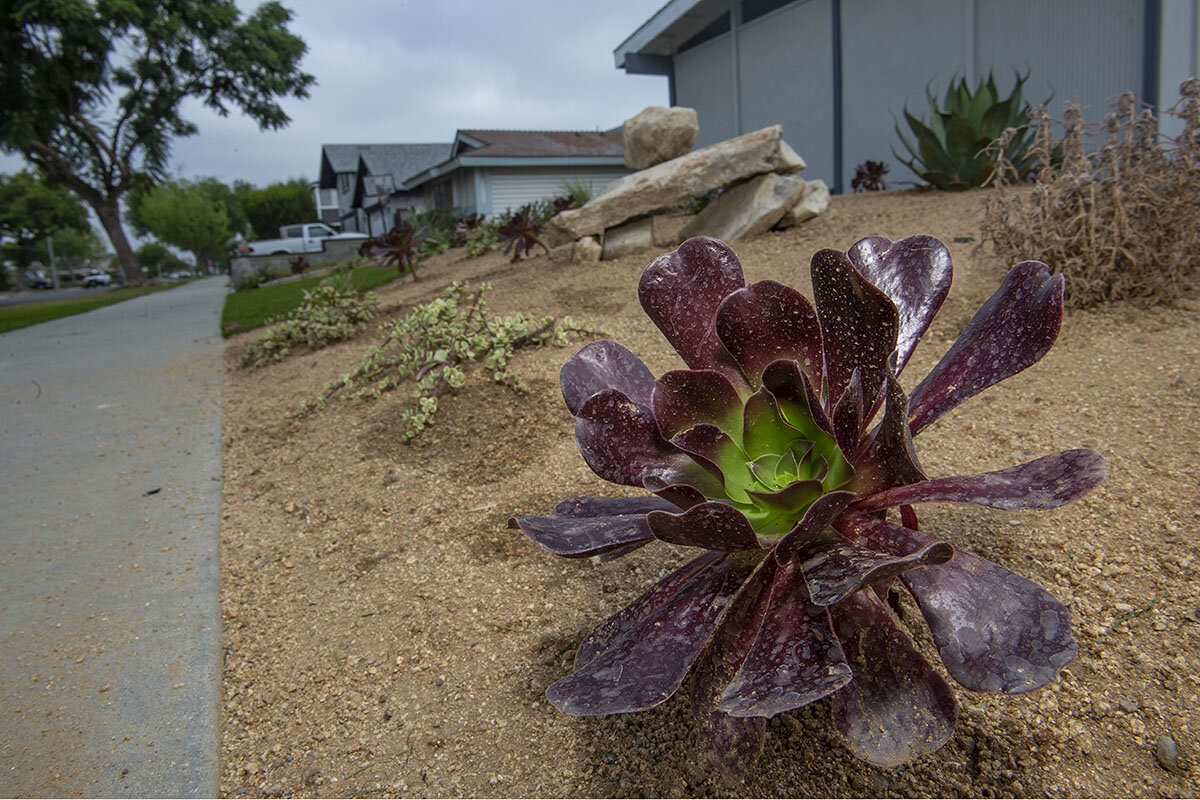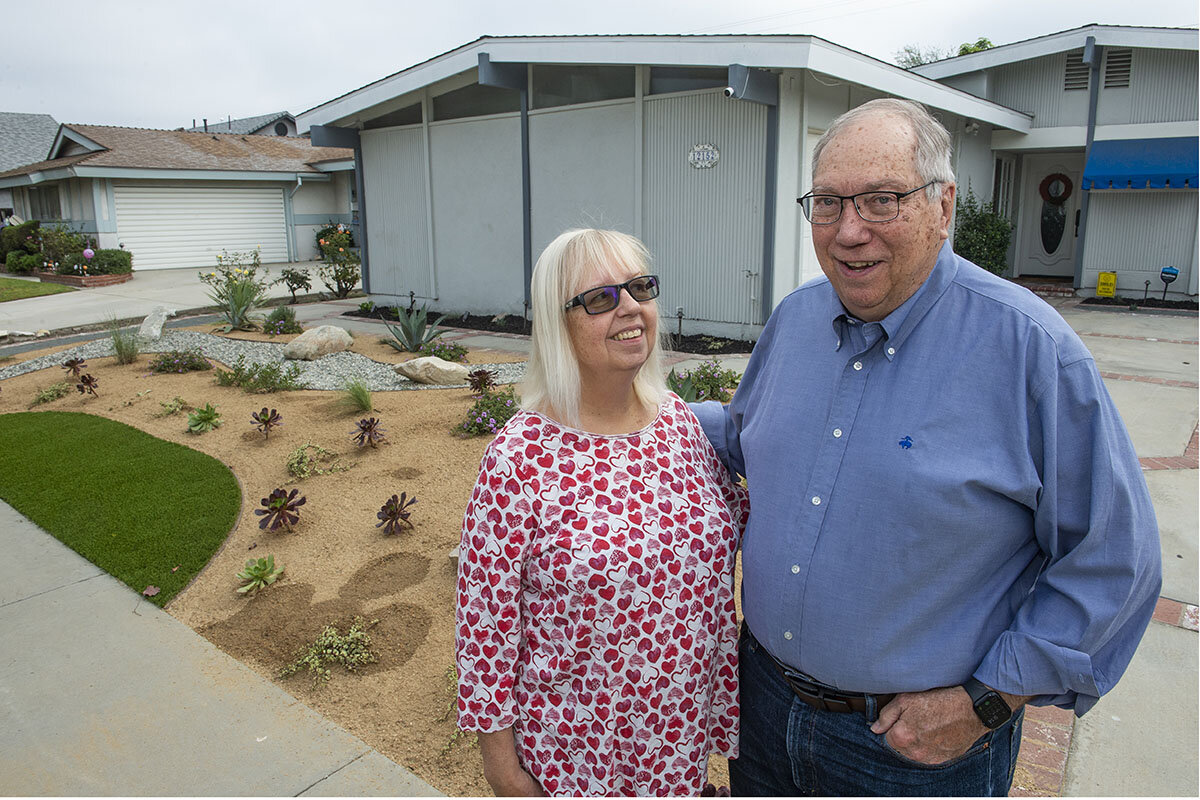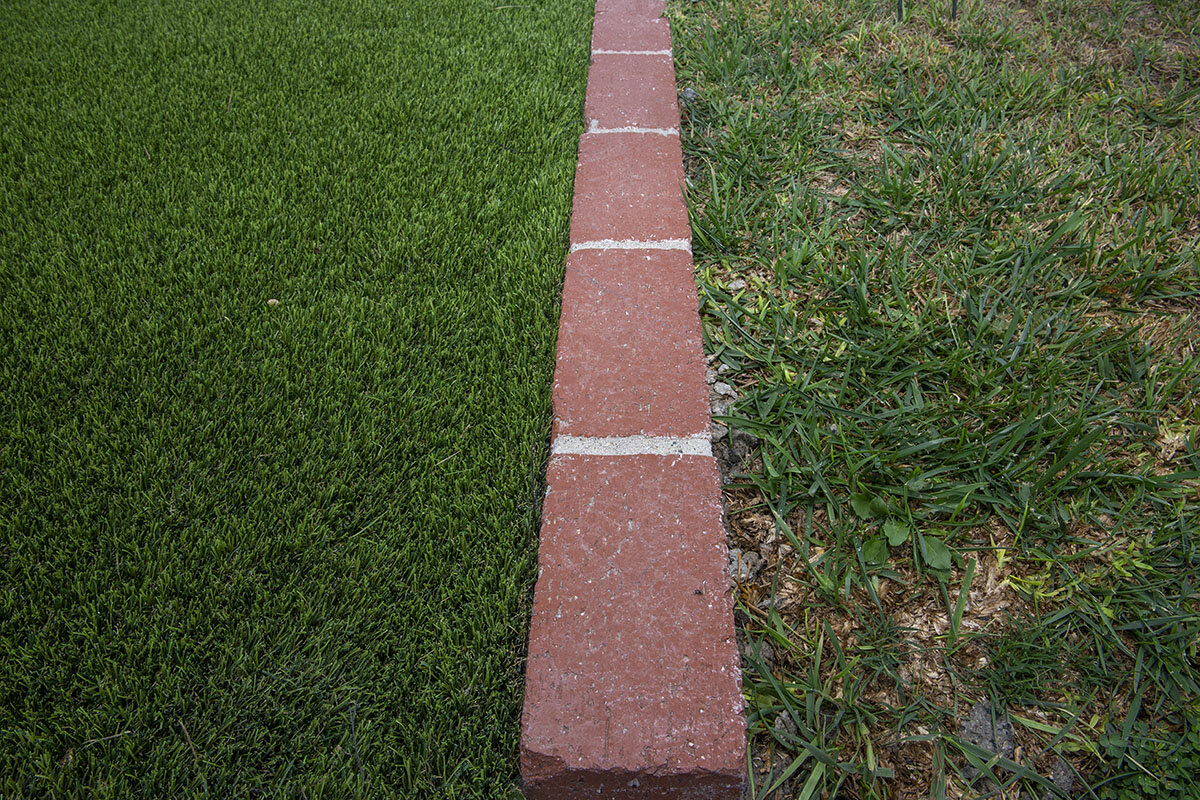Drought: Is there a way to have sustainability and a lawn?
Loading...
| Los Angeles
In some Phoenix neighborhoods, strolling families and dog walkers can be seen playing a game: real or fake?��
Guessing at this used to be laughably easy. Now artificial lawns are so convincing that it may take plucking and sniffing a wispy blade to discern if the lush green carpet outside a home is living flora or cunning plastic. Even dogs get confused. The snootier ones turn up their noses.��
In Los Angeles, the neighborhood game is more like an office pool, the goal of which is to guess how many months it will take homeowners who have ripped out their lawns in favor of government-subsidized native shrubs or cactus to reverse course and replant water-guzzling sod when they decide to sell or get a new cornhole set.
Why We Wrote This
Perhaps nothing challenges the homeowner’s aesthetic as much as the question of whether grass lawns are over – socially unacceptable. Striking a balance through innovation is a first step in figuring out the place of the lawn in American culture.
The stakes in such matters are far from trivial, as reflected in the yellow, orange, and dark plum shades splashed across of the United States this season – hues meant not to suggest autumn leaves but color-coding for “abnormally dry” to “extreme” and “exceptional” drought.��
Lawns have become crucibles of conscience, one more way individuals struggle to maintain a balance between freedom and responsibility in the nation’s cultural tug of wars. Even in places such as Ohio or New Hampshire, where lawns already hibernate under inches or feet of snow, a glimpse of a mower in the garage can stir traumatic memories of springtime’s judgmental stares: ��
Shame on you, one scowl says, for having a weedy splotch of yellowing turf in a freedom-loving neighborhood where the conscientious sacrifice their Saturdays to crawling on hands and grass-stained knees in search of renegade dandelions.����
Shame on you, says another, for having a lawn at all, you irresponsible, climate-disrupting monster. How dare you?
Rip out the lawn was their “right thing”
Susan Denley and Bill Nottingham were motivated less by shame than a local agency’s financial incentive when they decided to rip out the lawn adorning their front yard in Los Alamitos, a Southern California suburb on the border of Orange and Los Angeles counties.
They had bought their home in the development almost 40 years ago.
“Every house had a front yard with a lawn and trees and rose bushes,” Mr. Nottingham says. “It was ‘Leave It to Beaver,’ ‘Father Knows Best.’”
Everyone on the street seemed to��tacitly accept the aesthetic.
Gradually, though, as temperatures crept up and the West’s recurring droughts drove water bills higher, their commitment to the lawn teetered. Even after learning that the incentive they’d hoped for had expired, their resolve held.
“Let’s do the right thing,” Mr. Nottingham said, “and rip out the lawn.”
Turfgrass historians – and yes, there are many scholarly tomes on the subject –��trace the nation’s lust for lawns to the 18th��century, when word trickled back about a landscaping trend��taking root��on the grounds of such enviable architectural icons as the Palace of Versailles. Soon Thomas Jefferson had a lawn planted at his Monticello estate and George Washington at Mount Vernon.
A couple of centuries later, William Levitt saw the “charm and beauty” of lawns as such a strong selling point that he wrote covenants into the deeds of his affordable and notoriously conformist Levittowns, imposing fines on homeowners who didn’t mow theirs at least once a week in season.
And that, Case Western Reserve University history professor reports in his 2006 book, “American Green: The Obsessive Quest for the Perfect Lawn,” was one more step in the “colonizing” of the nation by grass. It has become, researchers say, the most expansive irrigated crop in America, one that sprawls over more land than cotton or corn, covering tens of millions of acres of turf farms and the golf course fairways, cemeteries, parks. and, yes, front and back yards nationwide to which they cater.
Lawn supporters, including those who write the webpages for the $2 billion Scotts lawn company, will tell you that those green acres suck carbon dioxide out of the air and release oxygen, trap dust, dampen the clamor of urban life, mitigate storm runoff, prevent erosion, and cool our homes and neighborhoods. To which environmental skeptics respond, well, maybe so, but natural landscapes do a much better job of all that without squandering water and poisoning rivers, lakes, wetlands, and the ocean with herbicides, pesticides, and fertilizers.
A growing body of work, with titles such as “Requiem for a Lawnmower,” pleads for, though never quite predicts, a future without lawns.��
Americans, after all, are so loyal to those comforting expanses of green that agronomists, botanists, horticulturalists, and other scientists nationwide spend entire careers, funded in part by the multibillion-dollar golf and lawn care industries, studying, breeding, and testing turf to fine-tune regionally preferred cultivars for color, durability, bug and weed resistance, and the textures so many of our bare feet or cleated shoes crave.
In search of the sustainable lawns��
On a warm autumn morning at the University of California, Riverside’s sprawling agriculture research center, researcher holds aloft a dirt-packed root-and-grass��stolon, a horizontal runner from��one of the new cultivars of grass he has been cultivating.
Dr. Baird, who declares his favorite color to be “green,” says he fell under the spell of well-tended turf, redolent of the outdoors and sports, in high school while working at a Colorado golf course. He picked the colleges he attended for their programs in turfgrass research and has spent the past decades teaching and researching the genetics, breeding, propagation, and care of grass.
While his peers at universities in water-rich Florida may focus on the ever-popular Kentucky bluegrass��and those in Michigan or Colorado��on the fescues that thrive in the midwest, Dr. Baird focuses mainly on Bermuda grass, a warm-weather cultivar that landscapers and groundskeepers have been nudging westward as the Earth heats.
Water agencies and environmental organizations “scapegoat” lawns for water shortages, Dr. Baird says. It is in the spirit of compromise that he and colleagues ,��he says, to be��at least��a third less thirsty than the previous types of Bermuda and use more than 50% less water than cool-season grasses like the fescues, ryegrasses, bluegrasses.
“As long as there’s genetic variation,” he says, “there’s a way to make something better.”
Foolishly mention the type of turf that doesn’t need water at all and he growls, “I’m not a fan.” The fake stuff, he says, can heat up to 190 degrees on hot days – and environmentalists trot out even harsher critiques, citing microplastics leaching from the petroleum-based synthetic turf and mountains of the fabric piling up at landfills among the side effects.
Dr. Baird’s pride in his work and passion for the form and function of living lawns is so irresistible that a reporter can’t help but kick off his shoes and stroll over a patch of dewy turf, letting bare soles connect with memories of backyard tackles broken by spongy loam and the sting of wet green blades that stroke a body careering headlong off a slip and slide.
Similar memories, from the days when their children played soccer and baseball on the family’s front and back lawns, keep Mr. Nottingham from swearing under oath that he and Ms. Denley will never roll out turfgrass again.
But so far they seem proud of their role as sod-busting pioneers of a more sustainable suburbia. And so far, Mr. Nottingham says, neighbors have expressed only admiration for their new front yard of decomposed granite, river rock, olive trees, and xeriscaping – with just a fringe of artificial lawn for the sake of continuity with the neighborhood’s “Leave It to Beaver” past.����






